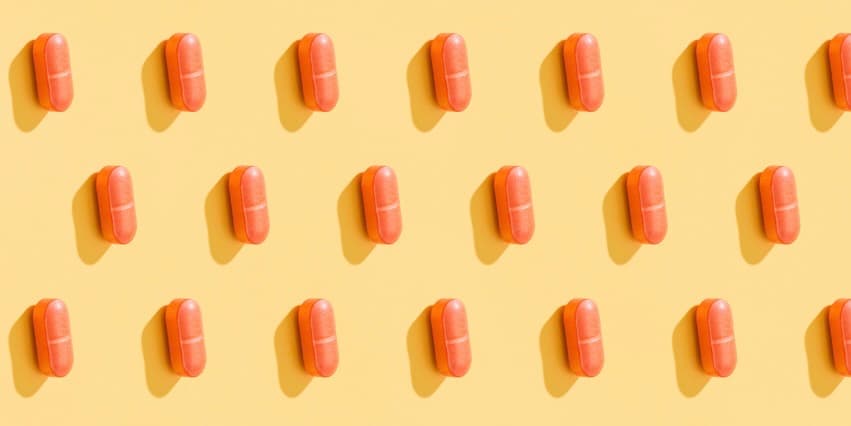
Is it a UTI or something else? Here’s how to tell.

Key Points:
- UTI symptoms include pain or burning with urination, a frequent need to pee, blood in the urine and pelvic pain.
- Conditions that affect the pelvic area—like yeast infections, kidney conditions and some STIs—can share symptoms. Without treatment, some can cause serious long-term complications.
- Even if you’ve experienced UTIs in the past, make sure to have your condition properly diagnosed. That way, you can get a UTI prescription treatment or know which specific condition is ailing you.
A urinary tract infection (UTI) is any infection in the urinary system. It can include the urethra, bladder, ureters and kidneys.
Our bodies often fight off bacteria that enter the urinary tract. But sometimes, the immune system gets overwhelmed. This allows bacteria to grow and spread and cause confusing symptoms.
What are common UTI symptoms?
Some symptoms are common to various conditions and UTIs including:
- Burning while peeing
- Painful urination (dysuria)
- Lower abdominal pain or back pain
- Bloating
- Feeling like you have to go to the bathroom often and urgently
- Bloody urine
- Cloudy urine
- Fever, aches or chills
- Nausea or vomiting
If you have any of these common UTI symptoms, talk to a medical provider. They may have you take a urine test and prescribe antibiotics if necessary.
Otherwise, here are a few ways to tell if your symptoms are caused by a UTI vs. something else.
UTI vs. bladder infection?
Technically, a UTI is a bladder infection—it results from bacteria infecting the bladder. But you can experience similar bladder symptoms without a bacterial infection. When inflammation of the bladder causes symptoms without infection, the condition is called interstitial cystitis.
Symptoms of interstitial cystitis include:
- Pain or burning while peeing
- Frequent, urgent need to go to the bathroom
- Pain while the bladder fills, or after it's emptied
- Pelvic or low back pain
- Pain during sex
UTI vs. yeast infection
A yeast infection in the vagina or penis can sometimes be confused with a UTI. But yeast infections typically cause other symptoms that include:
- White or yellow cheese-like discharge from the vagina
- Burning, itching or redness on the exterior of the vagina or along the vaginal walls
- Red, raw, itchy or painful rash on the penis
Antibiotics can impact bacteria in the vagina, making a yeast infection more likely—especially if you get recurrent UTIs. That’s why it’s vital to make sure your condition is diagnosed accurately—you only want to take antibiotics if necessary!
You also want to tell your provider if yeast infection symptoms develop after you’ve started UTI antibiotic treatment. That way, your provider can diagnose and treat both conditions to alleviate doubled discomfort. To treat a UTI and yeast infection at the same time, start a $15 online consultation with Dr. B
UTI vs. BV
Bacterial vaginosis (BV) is caused by an imbalance of “good” and “bad” bacteria in the vagina. It shares symptoms with yeast infections like vaginal discomfort). It can also involve the painful burning of a urinary tract infection. So BV can feel like a UTI.
But additional (prominent) BV symptoms include:
- A watery or thin vaginal discharge that can look gray or greenish
- A strong, fishy vaginal odor, which may be worse after sex
You can have these conditions at the same time and treat BV and UTI together. Fortunately, Dr. B offers online UTI prescriptions and online BV treatments with a $15 consultation.
UTI vs. STD/STI
Some sexually transmitted diseases (STDs) and sexually transmitted infections (STIs) cause burning with urination and pelvic pain. But many STIs also cause discharge, itching, bumps, sores or blisters around the genitals.
STIs don’t always cause symptoms. And technically, an STI can cause a UTI if it moves into the urinary system. So again, check with a provider to learn which condition you have.
UTI vs. chlamydia
Chlamydia is an STI that affects vaginas and penises. Chlamydia doesn’t always cause symptoms and may present only mild symptoms. But mild cases can cause serious long-term problems, including infertility, increased risk of miscarriage and a more widespread infection.
Symptoms of chlamydia include:
- Pain with urination
- A yellowish, strong-smelling vaginal discharge
- A thin, milky discharge from the penis
- Frequent urination
To avoid chlamydia, use barrier birth control (like condoms) and get tested for STIs regularly. If one sexual partner has chlamydia, both partners should be treated to prevent retransmission.
UTI vs kidney infection
A kidney infection is a type of UTI. It requires prompt treatment, because infection can spread or cause permanent kidney damage or kidney disease.
Symptoms of a kidney infection include:
- Nausea or vomiting
- Abdominal pain
- Fever or chills
- Body aches or back pain
- Blood in the urine
UTI vs. kidney stones
A kidney stone is a small pebble that forms in the kidneys. As the stone travels down the urinary system, it can get stuck in a ureter or the urethra, causing intense pain and other symptoms. A kidney stone can also block urine. So while a kidney stone is not a UTI, it can cause UTIs by blocking or slowing urine flow.
Symptoms depend on where the stone(s) are and their size.
But common symptoms include:
- Nausea and vomiting
- Reddish-brown or bloody urine
- Feeling like you need to pee a lot
- Pain or burning when you pee
- Pain in the back or pelvic area
UTI and constipation
Some studies show a connection between constipation and increased UTI experiences. But the jury is out on whether or not constipation causes UTIs.
The bladder and urethra are close together. So constipation pressure may cause the bladder to retain liquid as a side effect. When that happens, bacteria have a greater chance of multiplying. But again, experts aren’t sure about this process.
Can a UTI delay your period?
UTIs are not likely to delay menstruation. They affect a different part of the body and do not disrupt hormones. If your period is delayed, you may be extra stressed, have a hormonal imbalance, or be pregnant. If concerned, get in touch with your primary care provider or OB/GYN.
Can you get antibiotics for UTI online?
To get UTI meds online, start a Dr. B online consultation. A licensed medical provider will review your health history and symptoms. If they determine that prescription UTI medicine is appropriate, they’ll send it to your chosen pharmacy.
To summarize
Urinary tract infections can share symptoms with yeast infections, bacterial vaginosis, some STIs and other bladder conditions. You can also have more than one of these conditions at the same time.
The best way to determine which condition you have is to have a consultation with a licensed provider. Only through proper diagnosis will you know how to treat a UTI with antibiotics or treat a secondary condition at the same time!
Sources:
Aaron, D. M. (2021). Candidiasis (yeast infection). Merck Manual Commercial Version.
Alhababi, N., et al. (2021). The association between constipation and lower urinary tract symptoms in parous middle-aged women. Journal of Women's Health.
Imam, T. H. (2022). Bladder infection. Merck Manual Commercial Version.
Imam, T. H. (2022). Kidney infection. Merck Manual Commercial Version.
Imam, T. H. (2022). Overview of urinary tract infections. Merck Manual Commercial Version.
Imam, T. H. (2022). Urethritis. Merck Manual Commercial Version.
Mayo Clinic. (2021) Interstitial cystitis.
Medina, M., et al. (2019). An introduction to the epidemiology and burden of urinary tract infections. Therapeutic Advances in Urology.
Merck Manual Editorial Staff. (2021). Quick facts: Stones in the urinary tract (kidney stones). Merck Manual Commercial Version.
Sign up for the free Dr. B newsletter for a weekly report on the latest in healthcare + research-based advice for staying healthy and mentally well.





